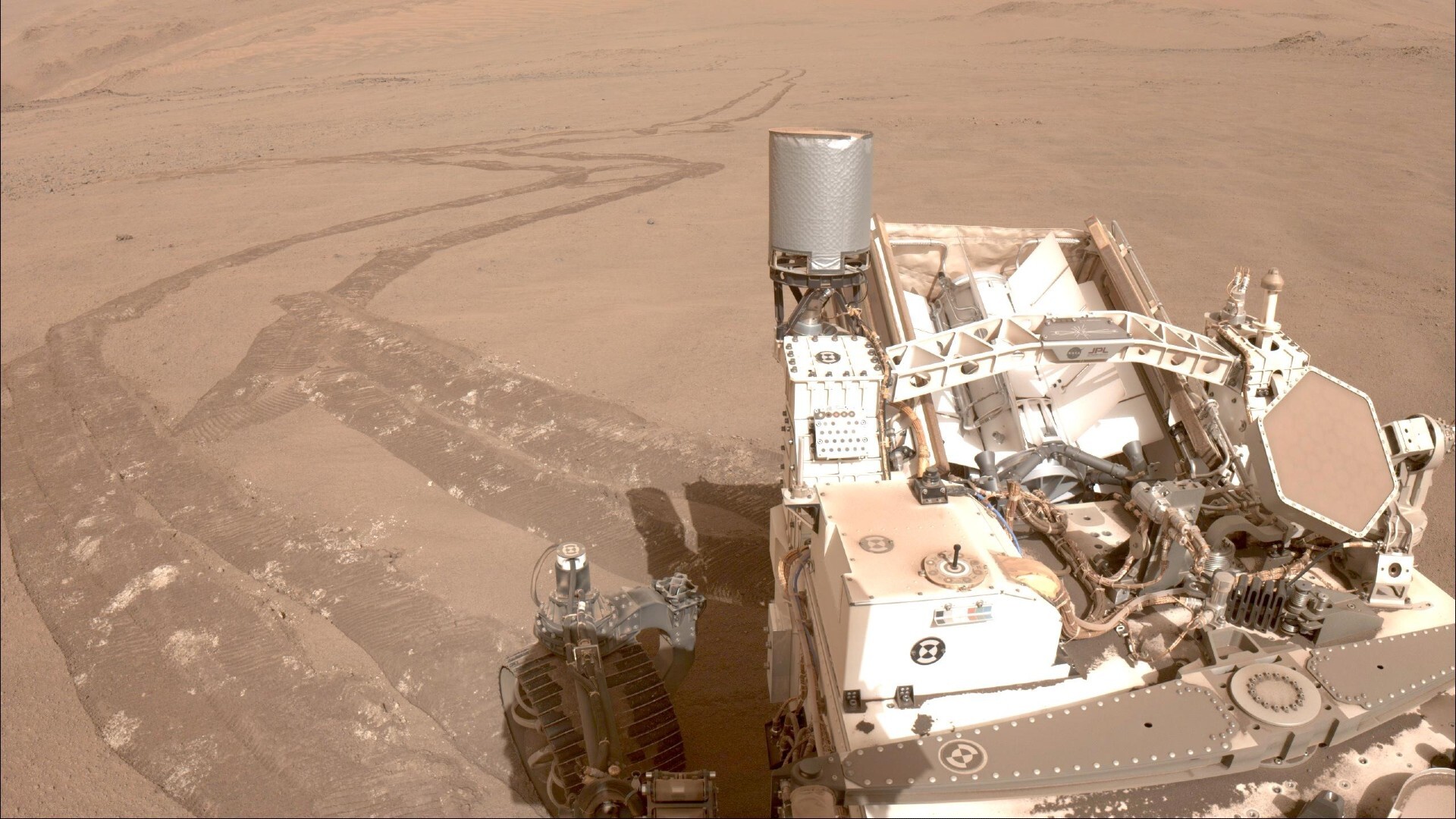A giant plasma cloud bursts from the sun, but fortunately it won't hit Earth
The sunspot that produced the explosion may be facing Earth in less than two days.
A giant cloud of magnetized plasma exploded from a sunspot hidden on the far side of the sun that might turn to face Earth only two days from now, so get ready for some solar fireworks.
The explosion that erupted from behind the sun's eastern edge in the early morning of Tuesday (Jan. 3) was a so-called coronal mass ejection (CME), a burst of particles from the sun's upper atmosphere, or corona. The CME was accompanied by a powerful solar flare that lasted an overwhelming six hours, solar scientist Keith Strong said on Twitter.
Neither the flare nor the CME were directed at Earth, but experts warn that the hidden sunspot that produced them will soon be facing the planet as the sun rotates.
Related: Extreme solar storms can strike out of the blue. Are we really prepared?
Sunspots are darker regions in the sun's lower atmosphere that are cooler than the rest of the sun's disk and feature dense and convoluted magnetic field lines. When these magnetic field lines break, the sunspots release solar flares in the form of bright flashes of light and CMEs. Solar flares travel at the speed of light, reaching our planet within eight minutes if directed toward it. CMEs, on the other hand, move through space more slowly, arriving within two to three days. Solar flares can disrupt radio communications on our planet without a warning, but it's the CMEs that experts fear the most. The magnetized plasma from CMEs interacts with Earth's magnetic field causing all sorts of unwanted effects on technology including power blackouts, GPS disruption and satellite malfunctions. These interactions, however, are also the cause of mesmerizing polar lights displays, or auroras.
CME-WATCH - 2023.01.03: As predicted the large flare behind the east limb (see earlier tweets) produced a very large, violent and rapid CME. There is a second spectacular event, albeit slower, but off the southwest limb right at the end of the video. pic.twitter.com/bobunGdhFWJanuary 4, 2023
Yesterday's flare and CME were detected by multiple sun-observing spacecraft including the joint NASA/European Space Agency Solar and Heliospheric Observatory mission (SOHO) and NASA's Solar Dynamics Observatory.
The measurements helped scientists to determine that the sunspot, or active region, that produced the bursts, will move to the Earth-facing portion of the sun's disk within two days, according to Space Weather. The active region may, in fact, be one already known to solar scientists. In December, a sunspot named AR3163, at that time larger than our planet, crossed the sun's disk before disappearing from view about two weeks ago. This sunspot is now expected to re-emerge and scientists think it may have grown even more powerful since we have last seen it.
Breaking space news, the latest updates on rocket launches, skywatching events and more!
In the meantime, plasma from a CME that erupted from the sun on Dec. 30 has reached Earth today (Jan.4), triggering a minor geomagnetic storm that could make auroras visible a bit further away from their usual location around the poles.
The British space weather forecaster Met Office predicts low solar activity in the next couple of days with a potential increase expected toward the end of this week as the mysterious sunspot emerges at the sun's eastern edge.
Follow Tereza Pultarova on Twitter @TerezaPultarova. Follow us on Twitter @Spacedotcom and on Facebook.

Tereza is a London-based science and technology journalist, aspiring fiction writer and amateur gymnast. She worked as a reporter at the Engineering and Technology magazine, freelanced for a range of publications including Live Science, Space.com, Professional Engineering, Via Satellite and Space News and served as a maternity cover science editor at the European Space Agency.

